 Your new post is loading...
 Your new post is loading...
SCG executive vice president Michael Cherenson calls moms “an economic juggernaut, affecting huge segments of the market and driving many of the most important buying decisions. The agency surveyed 250 moms, and revealed a significant percentage of moms who say they’re the primary decision maker in purchasing a variety of products: - Food and beverages (92.3%) - healthcare (60.2%) - Education (68.8%) - Travel and hospitality (76.9%) - Appliances (64%)....
As we approach the year's second quarter, Google is already returning over 46,600 results for “digital trends 2017.” And if you’re in the digital marketing space, there seems to be an unspoken rule that you must always have an opinion on what the key trends will be for the year ahead.
But could it be that we’re all stuck in an industry echo chamber? As it turns out, some new research from Code Computerlove might burst that bubble.
Code Computerlove surveyed 1,000 U.K. adults to find out what they really think about these trend predictions -- things like voice search, virtual reality, and chat-bots. That data was then compared to what’s actually making the most noise online. Some key findings included:
- Mobile payments are the most sought-after technology in 2017.
- 9 out of 10 consumers claim to have no interest in using augmented reality in the near future.
- 1 in 5 people surveyed aim to spend less time in front of screens this year....
A new European study on human behaviour suggests that people can be divided into one of four main personality types — with 'Envious' being the most common.
The new research, carried out by a team of researchers from Universidad Carlos III de Madrid and the universities of Barcelona, Rovira i Virgili and Zaragoza, Spain, presented 541 volunteers with hundreds of social dilemmas and asked them to report on what they would do in each situation.
Participants had to make decisions based on individual or group interests, which would lead to either collaboration or conflict with others.
The decisions also had different consequences depending on what another participant involved decided to do, with Anxo Sánchez, one of the authors of the study explaining, "Those involved are asked to participate in pairs, these pairs change, not only in each round, but also each time the game changes. So, the best option could be to cooperate or, on the other hand, to oppose or betray ..... In this way, we can obtain information about what people do in very different social situations."
The researchers then created a computer algorithm to analyze the responses and classify participants into personality groups based on their behaviour.
The results showed that the majority of the participants — 90 per cent — could be divided into just four basic personality types, Envious, Trusting, Optimistic, and Pessimistic.
Pre-tail seems to be one of the new buzzwords thrown around the CPG category. But what does it really mean, and should we be taking it seriously? Pre-tail refers to the entire journey of the shopper before they reach the point of purchase. Product research, browsing social channels, building shopping lists, and organizing coupons and rewards all fall into the pre-tail category. Various often-quoted studies by Point-of-Purchase Advertising International and The Marketing Science Institute have said that between 60 and 70% of purchase decisions are made at retail. Regardless of the exact number, that means at least 30 to 40% of consumers have made their decisions before they ever walk into a store, which is hardly insignificant. ...
When a book telling people to throw away almost everything they own becomes a best seller and the start of a spiritual movement, it’s a good indication we’re consuming too much. But it’s hard to reconcile this idea when so many families, even in some of the world’s most durable economies, feel like they are barely getting by. Households have never had so many material goods, yet we hear constant reports of economic anxiety and feelings of hopelessness. The problem is livings standards. Our expectations of what we should own have increased—but incomes, for many of us, haven’t kept up. The disconnect leaves households vulnerable and struggling. There is no doubt living standards are rising. People around the world, of all income levels, are living longer, finding more leisure time, and enjoying more luxuries than at any time in history. Remember, only 30 years ago, air-conditioning was a luxury. Now it’s practically seen as a necessity....
There’s a widening gap between how marketers and consumers feel about brands collecting data and tracking customer journeys. According to a recent report by Edelman and The University of Cambridge Psychometrics Centre, 77% of marketers believe their organization should invest in predictive data and 71% of consumers believe that brands with access to personal data are using it unethically. Much of this data is collected by tracking customer journeys, which has gotten more complicated as consumers juggle devices over the course of considering and making a purchase. An OMD report revealed that people swap devices 21 times an hour. The traditional tracking cookie falls short....
For supporters of Britain staying in the EU, a simple question remains this morning: How did we fail to persuade voters of our position? Steve Martin, director at Influence at Work in London and best-selling author of several books on persuasion, spoke with HBR about the ways in which the Remain advocates’ message failed to get through, or even backfired. Martin was joined by Joseph Marks, a behavioral scientist on his team.
HBR: From a persuasion science point of view, how do you explain the vote for Britain’s exit from the EU?
Steve Martin: There seems to have been a focusing effect. The Leave side made sure that immigration became a focus. Not only a focus but the focus. And once that’s a focus it’s hard to get other messages through. What we see is all there is. Danny Kahneman said that clearly. We can only pay attention to a limited number of things and if we see that immigration story every day, that’s what affects us more than a rational argument that predicts what would happen if we left.
But they saw the economic arguments every day, too. Why couldn’t the Remain side focus the voters on that?
Joseph Marks: I think both campaigns were built around fear of loss. One was what we’re losing in terms of immigration coming in. And one was loss to the economy and your pocket. Normally that wins. That’s number one. But right now, you can see that immigration issue as happening now, in the present, whilst the economy is doing well. In the optimism literature, we’ve seen that people are generally optimistic about their own futures when the economy is good, so that’s maybe how the economic argument lost to something that feels more pressing to people. So ironically the very people who helped get our economy on track created an environment that makes it harder to communicate their message of potential negative impacts of leaving the EU. The health of the economy created a good economic environment that had a disproportionate influence over decision making at that moment....
In looking to solve this problem and figure out exactly what it is that is convincing consumers to buy online, BigCommerce commissioned a study into the modern consumer journey. We learned how, when, why and where U.S. consumers buy today –– and more so, what is stopping them from doing so.
This information is incredibly important for retailers looking to sustain and grow their revenue. In today’s omni-channel world, brands must be strategic about merchandising on their various channels and need to fully understand why or why not their customers are clicking the buy button –– no matter where it appears.
Check out the infographic below for key insights or read the full State of Omni-Channel Retail Report....
So why is this? Why do some societies not encourage casual smiling? I got my answer, or at least part of one, when I stumbled across a new paper by Kuba Krys, a psychologist at the Polish Academy of Sciences. In some countries, smiling might not be a sign of warmth or even respect. It’s evidence that you’re a fool—a tricky fool. Krys focused on a cultural phenomenon called “uncertainty avoidance.” Cultures that are low on this scale tend to have social systems—courts, health-care systems, safety nets, and so forth—that are unstable. Therefore, people there view the future as unpredictable and uncontrollable. Smiling is a sign of certainty and confidence, so when people in those countries smile, they might seem odd. Why would you smile when fate is an invisible wolf waiting to shred you? You might, in those “low-UA” countries, even be considered stupid for smiling. Krys also hypothesized that smiling in corrupt countries would be, um, frowned upon. When everyone’s trying to pull one over on each other, you don’t know if someone’s smiling with good intentions, or because they’re trying to trick you....
The buyer’s journey is an important framework for marketing strategy — but what does it look like? How are buyers getting from step one (“Do I have a need?”) to a justified decision? How can marketers harness this knowledge to create campaigns centered around the customer lifecycle?
We’ve all heard this popularly-quoted statistic: that 70% of the buyer’s journey is complete before a buyer even reaches out to sales (SiriusDecisions). Marketers and sales reps alike are having to adjust their strategies to cope with these changing consumer practices. But what can they do about the 70% of the buyer’s journey that they’re missing out on? What are buyers doing during this time? And how can a tool like marketing automation help marketers keep pace with their buyers?...
DIVE BRIEF: Some 40% of all adults “always” or “most of the time” search Amazon, compared to 10% who say they never do, according to the latest CNBC All-America Economic Survey.
And half of Americans searching Amazon also make a purchase there, compared to the paltry 3% that retailers on average see search turn to purchase, the survey found.
The phenomenon is an all ages affair. While most consumers searching Amazon are in general younger, wealthier, better educated, and more likely to live on the West or East coasts, Amazon also snags 41% of American consumers 65 years old or older for search on its site, and almost half of them also buy....
Today more than ever, food has become one of the most important—and discussed—choices among U.S. consumers. Since food purchases are heavily influenced by trust, Boston-based consultancy C Space released a study exploring customers' perceptions. "In today's marketplace, consumers are more actively engaged than ever in choosing what foods to buy and what brands to buy them from," said Alan Moskowitz, director at C Space.
"Given the speed that information travels, brand trust can increase or erode very quickly in consumers' minds. For brands, staying close to their customers can help them stay in touch with evolving attitudes and help them collaborate with consumers on new products, packaging and marketing that earns or maintains trust."...
Accenture conducted an online survey of over 4,500 consumers in October 2015 across the United States, Canada and China. Overall, consumers are showing an increase in their spending expectations this holiday season, with 40 percent of US consumers planning to spend more on holiday shopping although they are still enticed by a good deal.
Sparked by ongoing optimism around consumers’ personal financial situations across each of the five markets, consumers remain enthusiastic about Holiday Shopping–both in-store and online, although the majority of shoppers would prefer the online option over physical stores where a retailer sells their product using both channels.
And despite increased instances of cybersecurity breaches across multiple industries in recent times, consumers are increasingly open to sharing personal information with retailers in order to receive personalized offers. Privacy and security concerns are the number one reason in all markets for consumers when shopping on a mobile phone, smartphone or tablet....
|
I first drew a version of this cartoon years ago sitting behind the focus group one-way mirror while working at General Mills. We held a lot of focus groups, many of them in a Minneapolis suburb called Eden Prairie. We used to jokingly refer to those focus group respondents as “The Oracles of Eden Prairie.” We seemingly brought just about every marketing idea to the Oracles of Eden Prairie for inspiration and direction. But what frequently happened is that we would listen for statements that confirmed what we already believed and then disregard the rest. I learned that focus groups can be a great tool for confirmation bias. The Wall Street Journal recently wrote about how focus groups are gradually being displaced by technology-driven tools like social listening. As Seventh Generation’s Maureen Wolpert put it: “It’s very expensive to find that progressive-leaning, millennial new mom who has the time to attend a focus group. This is a way to listen in on the conversation moms are having and to really see their problems.”...
Netflix's data wizard says we're close to a future where algorithms know almost everything we want. "A very realistic vision is we should get to the point where you just turn on your Netflix app and automatically a video starts to play that you’re very happy with," says Vice President of Innovation Carlos Gomez-Uribe. "If you’re not, you may have to flip once or twice and end up with something that you’re very, very happy with. Only in, say, 10-to-20 percent of sessions [will you] escape into ... browse mode." Netflix has been creeping toward that goal for more than a decade. There was the Netflix Prize, launched in October 2006, which aimed at predicting how much users would like videos. As the company shifted into streaming video, it turned to engagement data to predict what users really wanted to watch. Last year saw the introduction of a major new algorithm that chooses between other algorithms to find the best recommendation. And many more improvements big and small. "It's just a matter of time," says Gomez-Uribe....
For commerce, mobile is at center stage. For example, 70% of smartphone owners who bought something in a store first turned to their device for information related to that purchase.
The tricky part here is that a retailer may never see the actual mobile activity that could be heavily influencing sales in their stores.
Some of this activity happens well before a store visit. The majority (68%) of consumers search on their smartphones for things they want to address at some point in the future.
Interestingly, at the actual moment consumers want to make a purchase, most (65%) used a mobile phone during that moment.
The number one way that those in-the-moment purchase considerations are addressed by 71% of consumers is by visiting a retailer’s website or app....
Welcome to the findings of the BrightLocal Local Consumer Review Survey 2015.
This annual survey is an exploration into how consumers both read & use online reviews. It seeks to qualify the value that users place on reviews that they read & how this impacts their opinions & actions when searching for a local business to use. The survey is specifically concerned with reviews for local business services and not wider product reviews. Key 'Takeaways' From Research: - 92% of consumers now read online reviews (vs. 88% in 2014)
- 40% of consumers form an opinion by reading just 1-3 reviews (vs. 29% in 2014)
- Star rating is #1 factor used by consumers to judge a business
- 44% say a review must be written within 1 month to be relevant
- Only 13% of consumers consider using a business that has a 1 or 2 star rating
- 68% say positive reviews make them trust a local business more (vs. 72% in 2014)
- Consumers are becoming more concerned about fake reviews
US internet users are equally divided in their intentions to be plugged in or unplugged to the web while on vacation. Yet, according to research, most ultimately do connect to the internet regardless of gender or age.In March 2016, Intel, along with MSI International, surveyed 1,504 internet users ages 21 to 54 in the US about their internet habits while on holiday. Respondents were evenly split when asked if they had gone on vacation with the intention of being offline at some point in the past year. A disparity did exist when looking at gender: More than half (57%) of men said they did plan to be disconnected, compared to 44% of women. And more interestingly, when looking at age, the older the internet user, the less likely they were to have anticipated on unplugging while away from home. More than three-fifths of those ages 51 to 54 said they had not considered any unplugged vacationing, compared to 44% of millennials ages 21 to 30....
Impulse purchases could soon be a thing of the past thanks to the internet, as shoppers are more likely to consider a purchase over a short period of time than spontaneously click to buy.
Just 42% of purchases happen during the first hour of online shopping sessions, according to a new report from personalization platform Monetate.
Monetate analyzed data from the first quarter of 2016 and found that shoppers browse heavily during the workday – in fact, the biggest workplace distraction could well be shopping.
Desktops dominate during the day. Between 8 a.m. and 4 p.m., desktop's share of page views never fell below 75 percent and peaked at 84 percent around 2 p.m. Outside of typical work hours, mobile devices account for 40 to 45 percent of page views during commuting hours, early mornings and late nights....
Via Douglas G Hall
Generation Z, America’s youngest generation (Born in 1996 or later) has never lived in a time when the barrier to real-time information and communication has been nearly nonexistent.
By 2020, Gen Z will account for 40% of all consumers, making it more important now more than ever to successfully connect with and engage this generation to create life long relationships. While many brands invest in Millennial marketing initiatives, with Gen Z, everything is going to get even crazier. This is the generation that will end the ideals of generations.
Researchers say goldfish have a larger attention span than Gen Z (6–8 seconds) and they cannot concentrate for long period of time. YES, this is technically right. But what the data won’t show you is Why. Gen Z just has a fast pace, highly selective and decisive filter that marketers have never seen or had to encounter before. However, once they find something they deem ¨worthy¨ they can become obsessively committed and engaged. This creates a unique opportunity but it also requires a new perspective and approach.
When I am asked, ¨Connor what was the ROI?,¨ the question goes in one ear and out the other. When executives use the acronym ROI, they are using the typical meaning which stands for Return On Investment. However, I think of it in terms of Return On Interaction. Putting resources towards relationships, engagement, and giving value to meaningful interaction, meaningful to them AND you, will mean way more for your brand than any form of traditional advertising, marketing or communication....
The American economy depends mightily on consumer spending, so this report bodes well for a healthier 2016, economists say. The wage gap and the economy’s failure to produce adequate income improvements even in a healthier economy have stymied spending for months. But that’s recently been changing, as reflected in this report.
Although there seems to be an increase in disposable income and wages, that could be a problem for retailers as more consumers are choosing to spend on experiences instead of accumulating material objects. Younger shoppers are especially prone to spending on experiences, according to a PwC survey published last year, which found that millennials said that more than half (52%) of their holiday spending would be experience-related, compared to 39% for older consumers.
Consumers are also choosing to save or pay off debt rather than spend, and when they do, they are increasingly favoring investing in home improvements. Retailers' recent earnings reports reflected these trends, as apparel-heavy retailers like Macy's, Kohl's, and J. Crew reported disappointing results while home improvement retailers beat expectations. These changes are forcing legacy retailers to reconsider their marketing strategies and physical stores, offering more value to the consumer with no-cost online resources and free in-store events....
At first glance, the weakness in luxury is puzzling because consumer confidence is high and Tiffany's customers still have discretionary income to spend.
But Yarbrough points out that people are increasingly spending on categories other than luxury retail.
"People are still willing to spend on auto, and they're still willing to spend on their homes which are bigger-ticket items," he said.
"They're more interested in cars or homes or experiences," he said, pointing to movies and traveling as examples — not apparel.
An analysis by Jharonne Martis, director of consumer research for Thomson Reuters, confirmed that people were spending their money on hotels and casinos, too, Business Insider's Hayley Peterson reported earlier this month....
These micro-moments when people act on a need with intent, immediacy, and within a particular context are rich opportunities for brands to engage. And they're increasingly happening on the small screen: mobile. In 2015 mobile searches surpassed desktop searches.
For marketers, it's these multiplying micro-moments of intent that represent the search story of the year. And these moments are the new battleground for brands. Here are three ways you can act on micro-moments to ensure your brand is ready to meet consumers in their moments of intent...
While similarities exist across all age groups, some key differences emerge immediately. First the similarities: Most U.S. adults intend to spend the same amount or more while shopping online during this season as compared to a year ago. 85% of U.S. Adults 18 and older plan to do so, ranging from 86% of 18-54 year olds to 83% of those 55 and older. Additionally, most consumers across all age groups plan to spend at least as much as they did last year on the top retail categories of Clothing and Electronics. Roughly three-quarters of U.S. adults plan to spend at least as much this season as they did last year on Clothing and Shoes and roughly two-thirds of U.S. adults plan to spend the same or more on Electronics. However, Clothing and Electronics spending plans do vary by age group with younger shoppers more likely than older consumers to spend the same or more on Electronics (75% of A18-34 vs. 57% of A65+) and Clothing (82% of A18-34 vs. 71% of A65+ on Children’s Clothing, 78% of A18-34 vs. 63% of A65+ on Shoes).
Beyond spending plans, younger consumers are more prone to being influenced by digital and mobile media than older shoppers are in their Clothing purchases. Overall, 1 in 4 U.S. adults report that they are influenced by Email Ads and 1 in 5 by Internet Ads in their Clothing purchases. More U.S. adults are influenced by Email (26%) than Broadcast TV (21%) and more by Internet Ads (19%) than Cable TV (13%) in their Clothing purchases. Digital influence is more pronounced among 18-34 year olds shopping for Clothing: 1 in 3 are Influenced by Email Ads, 1 in 4 by Internet Ads and 1 in 5 by Social Media. This younger demo is also twice as likely as the general adult population to be influenced by Mobile Video, Blogs or Web Radio. 35-54 year olds parallel the general adult population in digital media influence on Clothing purchases and 55-64 year olds are a bit less influenced by these media. Fewer clothing shoppers 65 and older are influenced by any media but twice as many of them are influenced by Internet Ads (10%) than Cable TV (5%)....
According to the IAB’s “Digital Shopping Report,” more consumers overall still prefer tablets over smartphones when it comes to making retail purchases — 35 percent vs. 28 percent — though when it comes to younger consumers, it’s a different story.
For shoppers between the ages of 18-34, the majority prefers smartphones over tablets for making purchases — 43 percent vs. 35 percent — while for adults between the ages of 34-54 it's the opposite, with most in this age group opting for tablets over smartphones — 41% vs. 35%. Those between the ages of 55-64 are more than twice as likely to use a tablet: 34 percent vs. 15 percent, respectively.
The study found this trend continues when identifying what devise consumers use for checking prices and reading product reviews. Consumers between the ages of 18 and 34 were more likely to skim product reviews on smartphones than tablets — 44 percent vs. 32 percent — and members of this age group are also more inclined to check prices on a smartphone than a tablet as well: 42 percent vs. 32 percent. Those between the ages of 35 and 54, however, are more prone to use tablets to read reviews, locate stores, check store hours, and compare prices: 40 percent vs. 35 percent....
|



 Your new post is loading...
Your new post is loading...

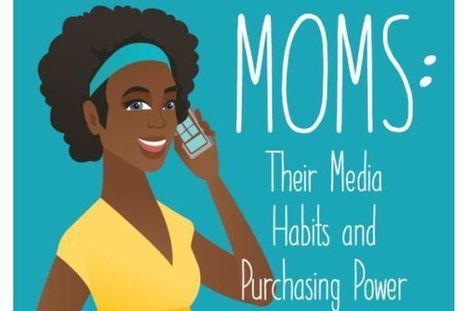

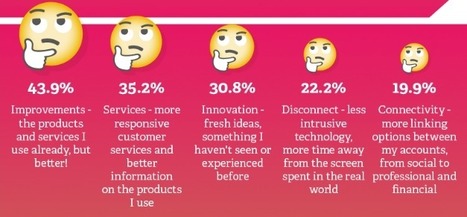

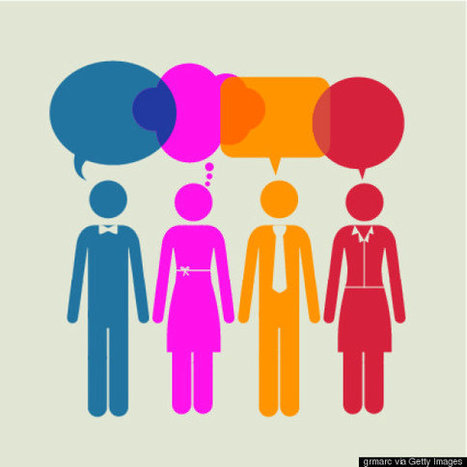





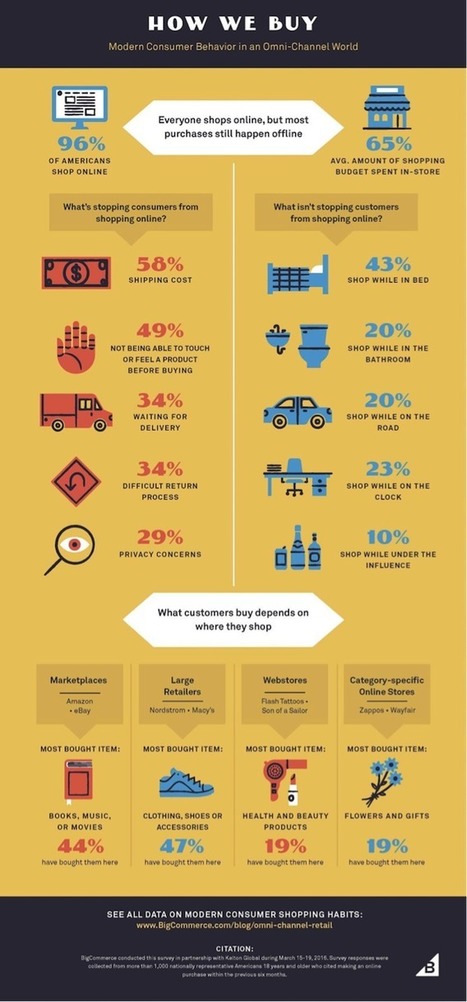


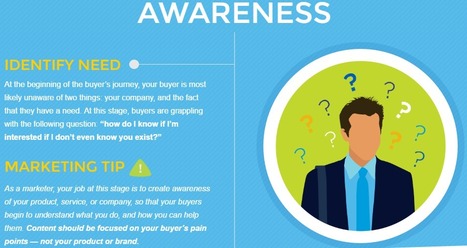


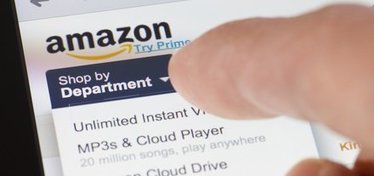
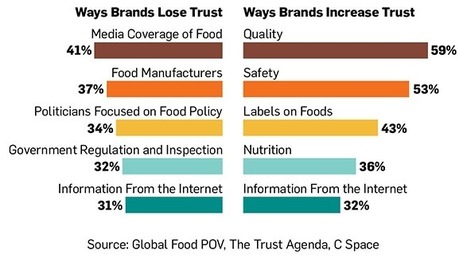



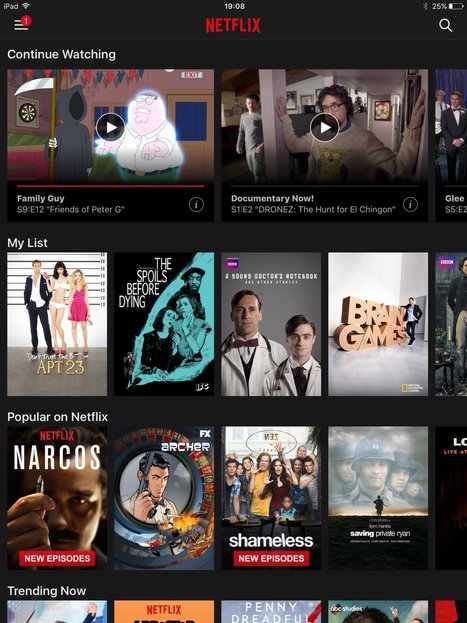

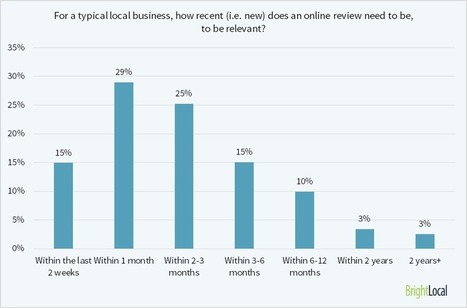
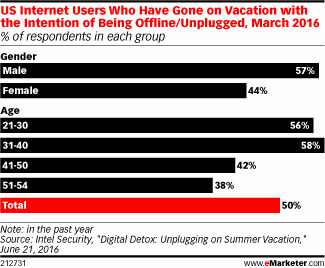


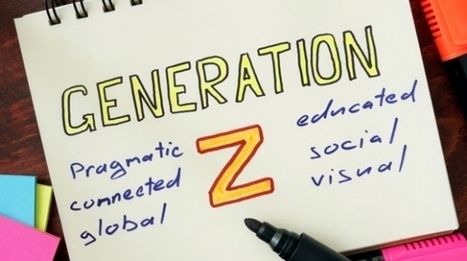


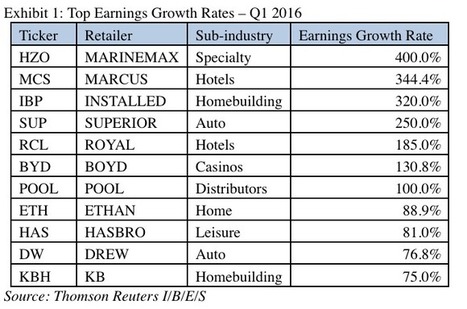







Mom's rule buying.